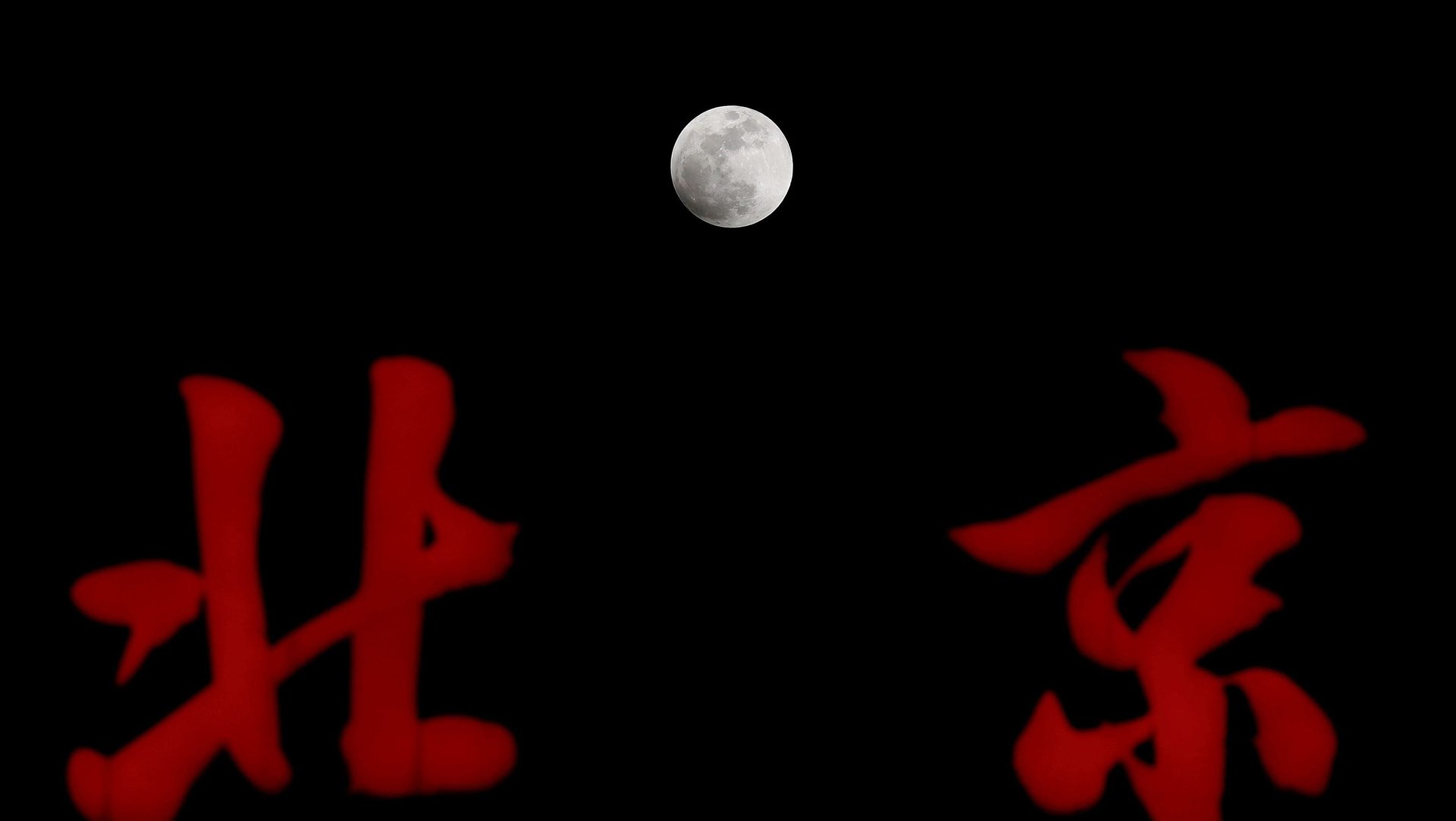From the moon’s far side, a radio receiver will listen for ancient clues to the universe’s origin
Neil Armstrong walked on the near side of our moon half a century ago. On Monday, China’s embarked on the first step of a mission to probe its far side, and even more ambitiously, search for glimpses of the universe’s origin.


Neil Armstrong walked on the near side of our moon half a century ago. On Monday, China’s embarked on the first step of a mission to probe its far side, and even more ambitiously, search for glimpses of the universe’s origin.
China launched the relay communication satellite Queqiao, or “bridge of magpies,” on May 21 at 5:28am Beijing time from its Xichang Satellite Launch Center in southwestern Sichuan province, according to the country’s space agency. Named for the birds in a Chinese folktale that help connect two parted lovers once a year, Queqiao will connect earth to the Chang’e-4 lander and rover that China plans to launch towards the end of this year. It’s an essential step for the lunar exploration mission because direct communication is impossible between the moon’s far side and the earth. If all goes as planned, China will become the world’s first nation to land on the far side of the moon by the end of the year.
Besides keeping the future lander in touch with earth, the Queqiao is also carrying a new scientific instrument built by Chinese and Dutch scientists.
A radio antenna, which is being transported with Queqiao, will be stationed some 60,000 km behind the moon. Scientists are hoping that the radio antenna will reveal clues about the early universe, the time after the Big Bang when stars began to form from an ocean of hydrogen.
Signals have different wavelengths, and those in lower frequencies are harder to catch from a place with a lot of interference like the earth, according to Heino Falcke, professor of astrophysics from Netherland’s Radboud University, which led the effort to design and build the antenna, known as the Netherlands-China Low-Frequency Explorer (NCLE).
The antenna is designed to catch ancient signals with frequencies below 30 megahertz, Falcke told Quartz ahead of the launch. Signals occurring in those frequencies might help to study the universe’s pristine beginnings, which scientists often call its dark ages.
“Underlying the strong humming sound from the Milky Way, there are some emissions from the early phase of the universe and it will recur at certain frequencies,” said Falcke. “If you don’t have much background noise you may be able to see some certain frequencies and that tells us something about the universe. It requires an extremely quiet environment.”
The far side of the moon can provide that environment, said Falcke. So far only a set of ground-based antennas in Australia has claimed to detect signals of the ancient dark matter, Falcke said, which could offer a reference point to what the NCLE catches.
The radio receiver will only start collecting data after Chang’e-4 arrives on the moon, Falcke said. Both the Dutch scientists and China’s teams will have equal access to the data.
China’s lunar exploration is a prism for the country’s rapid advancement in space exploration. In 2013, it became the third country to make a soft landing on the moon, with its robotic lander Chang’e-3. For Chang’e-4, it will carry seeds of plants like potatoes and silkworm cocoons to the moon, where China hopes to eventually build a scientific outpost.
Update: This story was updated May 21 with confirmation of the launch.